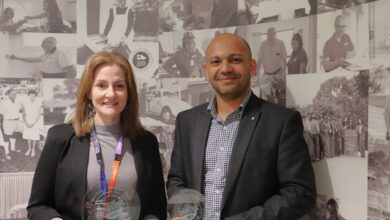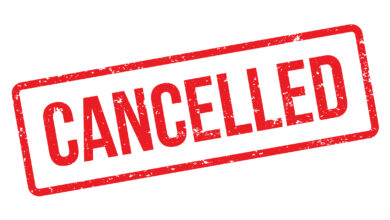Beyond the future

The career path for nurses is now branching out in many directions, giving rise to new, and challenging, opportunities. By Terry Smyth
It’s an image thing. Nurses consistently rate as the most trusted profession, yet the public’s perception of a nurse has moved little beyond the stereotypical “handmaiden of the doctor” – an image that couldn’t be further from the truth.
Hollywood doesn’t help. The typical TV medical drama has nurses merely standing by demurely while dedicated doctors make life-saving treatment decisions, perform delicate procedures using complicated technology, diagnosis, triage, round-the-clock observation and intervention, administration of medication, defibrillation, dialysis, endoscopy, psycho-social assessment and many other jobs that in real life are carried out by nurses.
In reality, the “Yes, doctor” image was never true. While nurses have too often been depicted as subordinates who simply follow doctors’ orders, they have always had their own knowledge base and autonomy. The nurse is, and has always been, the patient’s advocate. And by making independent decisions based on their knowledge, nurses save lives.
As society has grown more diverse, more complex, the knowledge base of nursing theory and practice has expanded to meet society’s needs. That wider knowledge base brought a shift in the traditional career path for nurses, notably apparent in Australia since the move from hospital schools to diplomas in the late 1970s, then to bachelor degrees in the 1980s. Compared to the rigid, institutionalised old path from student nurse to ward nurse to charge nurse to matron, this was a seismic shift.
In her 1989 book, Nursing For Life, Gael Knepfer predicted that future career paths for nurses lay outside the mainstream – in health promotion and preventative education, and as independent practitioners of such disciplines as acupuncture, osteopathy and meditation. The future for nurses, according to Knepfer and likeminded others, was holistic.
By the turn of the millennium, however, the path had shifted again, from the holistic approach back to task orientation, but with a difference. For nurses, the 21st century is the age of specialisation, not only at the bedside but increasingly beyond it.
The nursing profession now has one of the fastest growing of all career paths. A high proportion of nurses have post basic degrees, including masters degrees and PhDs, and it seems – on the surface at least – that graduates are spoilt for choice.
NSW Health lists current opportunities for registered nurses as including coronary care, child and family health, intensive care, midwifery, emergency nursing, mental health, occupational health, surgical nursing, rehabilitation, rural and remote community nursing, management, education and research.
Meanwhile, new technology is bringing new roles. In a digital world, more and more nurses will be found processing test results and x-rays, and ordering medication. Specialised roles for nurses are opening in diabetes, obesity, pharmacology and other clinical fields.
The future is also likely to see more nurses working as researchers, care coordinators and community liaisons, in anaesthetics, IVF, rehabilitation and oncology, while outside the hospital they may find careers as forensic nurses, clinic nurses, industrial nurses, legal nurse consultants, case managers for insurance and worker’s compensation, wound, ostomy and continence nurses, legal nurse consultants, flight nurses, academics, healthcare managers and administrators.
The list of nursing career opportunities of the future could include jobs with titles such as patient care co-ordinator, patient safety officer, emergency management director, health coach or lifestyle coach.
Already, nurses are publishing scientific research, developing healthcare policy, and, as nurse practitioners, hanging out their shingle in an expanding range of fields.
But while overseas studies have found that nurse practitioner services have reduced the demand on acute hospital services, improved health care access and lessened the workload on GPs, the nurse practitioner career option remains contentious across Australia. With the exception of the outback, where many medicos fear to tread, doctors have voiced strong reservations about NP services, in particular the ability of the NP to prescribe medication.
The 2008 Garling Report into acute care services in NSW hospitals recommended that: “NSW Health allocate funding for more nurse practitioner positions across NSW, particularly in rural and remote areas, and in hospitals where it is hard to employ doctors. The NSW government promulgate regulations as to the clinical decisions and procedures that may be made and undertaken by nurse practitioners. Implementation of this recommendation will provide certainty as to the scope of the nurse practitioner role, and promote acceptance of it. NSW Health instruct managers to ensure that nurse practitioners are directed to work in all areas for which they are qualified and that they are not to be used as if they were stop-gap or second-best clinicians.’’
Internationally, NPs can now be found in intensive care, emergency, surgical, cardiology, neurology, general medicine, primary care and oncology services, managing complex patient conditions in both in-patient and out-patient settings. Studies have found no difference in health outcomes between NPs and doctors, and that NP services achieve greater patient satisfaction and compliance.
So when will Australia catch up with the rest of the world and expand NP services? According to nurses’ online forums – an excellent source of unfiltered opinion at the coal face – that will only happen when our doctors get over themselves.
The branching of the career path into specialties is apparent across all states in Australia, and is evident, too, in New Zealand, the UK, the US and other developed nations.
If research in the US applies similarly to Australia, the nursing speciality expected to show the strongest growth is gerontology. With the aging of the baby boomers, the average age of the typical patient is now 65, and it’s estimated that by 2050, nursing homes will need 66 per cent more registered nurses, 72 per cent more enrolled nurses and 70 per cent more assistants in nursing.
And although caring for aged people in their homes rather than in institutions is widely agreed to be a laudable aim, it will require a massive 250 per cent increase in nurses of all levels.
So the future is not all roses. The question arises: who will be left at the bedside? As nurses step up the career ladder to take on more specialised and responsible roles, what will be effect at the bottom of the ladder? Who will be on hand to make the beds and empty the bedpans?
If by nurses we mean registered nurses, it seems that more and more traditional RN roles will be taken over by ENs and AINs, and, to lesser extent, by non-nursing staff. For example, the Garling Report suggests renal dialysis and transplant areas of nursing could be done by “technicians”.
Again, online forums reveal front-line nurses’ fears for the future.
Speaking from the heart, an RN posts: “In all honesty I believe in the near future our health system will be run by unskilled carers, and many people will die as a result. It’s a bit like going back in time where hospitals were a place you went to die, before Florence Nightingale stepped in and opened the first school of nursing. What else can I say when many aged care facilities are run by AINs, and most private hospitals employ more ENs than RNs.”
That nurse’s concerns, shared by many, are supported by studies. Internationally, a growing body of research shows a direct connection between the higher education of nurses and lower patient mortality rates. In other words, more RNs means fewer deaths.
But tell that to the politicians and healthcare bureaucrats, nurses say. According to The Planning Institute of Australia, the future career opportunities for skilled health care workers is already low and expected to fall a further 4 per cent by 20205.
Meanwhile, universities are producing skilled nursing graduates with little or no employment prospects. At the same time, a Department of Education, Employment and Workforce Relations report has found that in 20201 – 20202, the health care sector employed more than 1.3 million non-graduate workers.
The cynical view is that by increasing their skills, RNs have priced themselves out of a job. Strangely, it’s an accusation never hurled at any other profession.
Experienced RNs have seen the role of the EN expand from strictly limited duties under direct supervision to almost everything an RN does except carry the locked drug keys, and they have seen the numbers of ENs at ward level grow accordingly, while RN numbers have shrunk. It seems likely that trend will continue. As RNs move to supervisory or specialist consultant roles, there will be even fewer RNs at the bedside.
It’s already an old argument that patient care is being compromised in the cause of saving money.
Of increasing concern to RNs is that under the existing system they are held responsible for mistakes made by ENs, such as medication errors. A lone RN in charge of several less-educated staff has only one pair of eyes.
It’s not the EN’s fault – they are given too much responsibility and don’t have the knowledge to apply to their tasks – but it’s the RN who ends up in court.
Then again, from many an EN’s point of view, university-trained nurses too often avoid the bedside; as if making beds and taking obs is beneath them.
Clearly, as the Garling Report recommended, the system has to change. What’s needed, the report says, is teamwork focused on the patient; an end to traditional roles and professional jealousies.
To persist with a flawed template for patient care is to risk more lives. Florence Nightingale famously said, “The very first requirement in a hospital is that it should do the sick no harm.” Her dictum is as relevant now as it was then.
Caring for the sick is becoming more and more complicated. Healthcare budgets are tight and predicted to get tighter. Hospitals are understaffed and likely to remain so, for the foreseeable future at least. Yet while resources shrink, the need for care continues to rise.
As needs increase, the role of the nurse, at the bedside and beyond, will continue to evolve and diversify. On the career path, there will be more choices along the way, and with those choices a wider range of responsibilities.
And it seems that while the future for nursing will bring many more opportunities than ever before, nursing will also be more competitive, more challenging and more politicised than ever before.
Email: [email protected]





